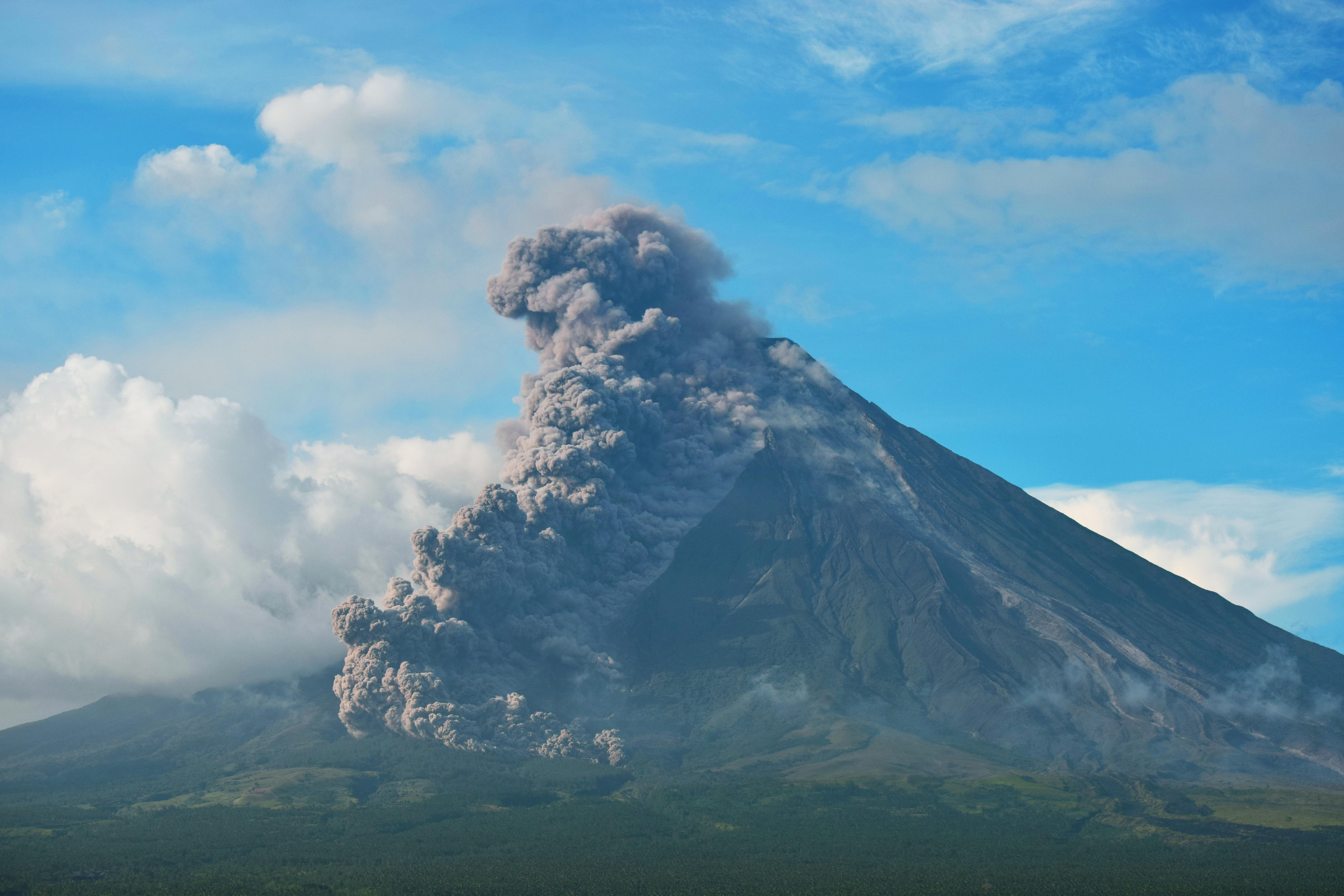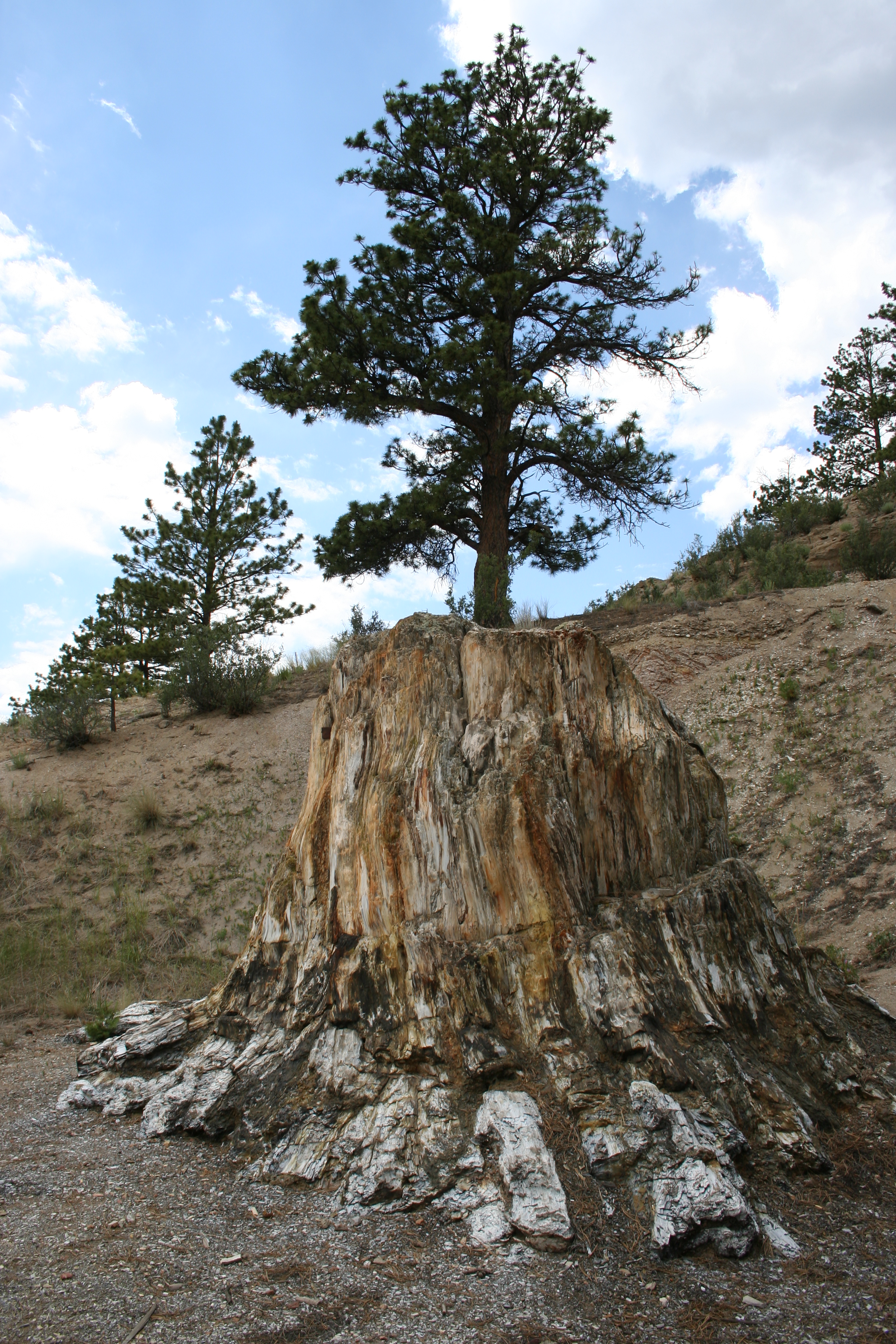|
Ignimbrite
Ignimbrite is a type of volcanic rock, consisting of hardened tuff. Ignimbrites form from the deposits of pyroclastic flows, which are a hot suspension of particles and gases flowing rapidly from a volcano, driven by being denser than the surrounding atmosphere. New Zealand geologist Patrick Marshall (1869–1950) coined the term ''ignimbrite'' from the Latin ''igni-'' [fire] and ''imbri-'' [rain]. Ignimbrites are made of a very poorly sorted mixture of volcanic ash (or tuff when Lithification, lithified) and pumice lapilli, commonly with scattered lithic fragments. The ash is composed of glass shards and crystal fragments. Ignimbrites may be loose and unconsolidated, or lithified (solidified) rock called lapilli tuff. Near the volcanic source, ignimbrites often contain thick accumulations of lithic blocks, and distally, many show meter-thick accumulations of rounded cobbles of pumice. Ignimbrites may be white, grey, pink, beige, brown, or black depending on their composition and ... [...More Info...] [...Related Items...] OR: [Wikipedia] [Google] [Baidu] |
Volcanic Rock
Volcanic rocks (often shortened to volcanics in scientific contexts) are rocks formed from lava erupted from a volcano. Like all rock types, the concept of volcanic rock is artificial, and in nature volcanic rocks grade into hypabyssal and metamorphic rocks and constitute an important element of some sediments and sedimentary rocks. For these reasons, in geology, volcanics and shallow hypabyssal rocks are not always treated as distinct. In the context of Precambrian shield geology, the term "volcanic" is often applied to what are strictly metavolcanic rocks. Volcanic rocks and sediment that form from magma erupted into the air are called "pyroclastics," and these are also technically sedimentary rocks. Volcanic rocks are among the most common rock types on Earth's surface, particularly in the oceans. On land, they are very common at plate boundaries and in flood basalt provinces. It has been estimated that volcanic rocks cover about 8% of the Earth's current land surface. ... [...More Info...] [...Related Items...] OR: [Wikipedia] [Google] [Baidu] |
Tuff Welded
Tuff is a type of rock made of volcanic ash ejected from a vent during a volcanic eruption. Following ejection and deposition, the ash is lithified into a solid rock. Rock that contains greater than 75% ash is considered tuff, while rock containing 25% to 75% ash is described as ''tuffaceous'' (for example, ''tuffaceous sandstone''). A pyroclastic rock containing 25–75% volcanic bombs or volcanic blocks is called tuff breccia. Tuff composed of sandy volcanic material can be referred to as volcanic sandstone. Tuff is a relatively soft rock, so it has been used for construction since ancient times. Because it is common in Italy, the Romans used it often for construction. The Rapa Nui people used it to make most of the ''moai'' statues on Easter Island. Tuff can be classified as either igneous or sedimentary rock. It is usually studied in the context of igneous petrology, although it is sometimes described using sedimentological terms. Tuff is often erroneously called tufa ... [...More Info...] [...Related Items...] OR: [Wikipedia] [Google] [Baidu] |
Pyroclastic Rock
Pyroclastic rocks are clastic rocks composed of rock fragments produced and ejected by explosive volcanic eruptions. The individual rock fragments are known as pyroclasts. Pyroclastic rocks are a type of volcaniclastic deposit, which are deposits made predominantly of volcanic particles. 'Phreatic' pyroclastic deposits are a variety of pyroclastic rock that forms from volcanic steam explosions and they are entirely made of accidental clasts. 'Phreatomagmatic' pyroclastic deposits are formed from explosive interaction of magma with groundwater. The word ''pyroclastic'' is derived from the Greek , meaning fire; and , meaning broken. Unconsolidated accumulations of pyroclasts are described as tephra. Tephra may become lithified to a pyroclastic rock by cementation or chemical reactions as the result of the passage of hot gases (fumarolic alteration) or groundwater (e.g. hydrothermal alteration and diagenesis) and burial, or, if it is emplaced at temperatures so hot that the soft gla ... [...More Info...] [...Related Items...] OR: [Wikipedia] [Google] [Baidu] |
Tuff
Tuff is a type of rock made of volcanic ash ejected from a vent during a volcanic eruption. Following ejection and deposition, the ash is lithified into a solid rock. Rock that contains greater than 75% ash is considered tuff, while rock containing 25% to 75% ash is described as ''tuffaceous'' (for example, ''tuffaceous sandstone''). A pyroclastic rock containing 25–75% volcanic bombs or volcanic blocks is called tuff breccia. Tuff composed of sandy volcanic material can be referred to as volcanic sandstone. Tuff is a relatively soft rock, so it has been used for construction since ancient times. Because it is common in Italy, the Romans used it often for construction. The Rapa Nui people used it to make most of the ''moai'' statues on Easter Island. Tuff can be classified as either igneous or sedimentary rock. It is usually studied in the context of igneous petrology, although it is sometimes described using sedimentological terms. Tuff is often erroneously called t ... [...More Info...] [...Related Items...] OR: [Wikipedia] [Google] [Baidu] |
Pyroclastic Flow
A pyroclastic flow (also known as a pyroclastic density current or a pyroclastic cloud) is a fast-moving current of hot gas and volcanic matter (collectively known as tephra) that flows along the ground away from a volcano at average speeds of but is capable of reaching speeds up to . The gases and tephra can reach temperatures of about . Pyroclastic flows are the deadliest of all volcanic hazards and are produced as a result of certain explosive eruptions; they normally touch the ground and hurtle downhill or spread laterally under gravity. Their speed depends upon the density of the current, the volcanic output rate, and the gradient of the slope. Origin of term The word ''pyroclast'' is derived from the Greek (''pýr''), meaning "fire", and (''klastós''), meaning "broken in pieces". A name for pyroclastic flows that glow red in the dark is (French, "burning cloud"); this was notably used to describe the disastrous 1902 eruption of Mount Pelée on Martinique, a Frenc ... [...More Info...] [...Related Items...] OR: [Wikipedia] [Google] [Baidu] |
Fiamme
Fiamme are lens-shapes, usually millimetres to centimetres in size, seen on surfaces of some volcaniclastic rocks. They can occur in welded pyroclastic fall deposits and in ignimbrites, which are the deposits of pumiceous pyroclastic density currents. The name ''fiamme'' comes from the Italian word for ''flames'', describing their shape. The term is descriptive and non-genetic. Fiamme are most typical of welded lapilli-tuffs and are commonly found in association with eutaxitic textures, best seen under the microscope. Some fiamme represent fragments of volcanic ejecta, often pumice lapilli that have been flattened by compaction and/or shear. Some fiamme are formed from flattened hot, relatively low viscosity, high porosity fragments of volcanic glass or pumice. But this is not the only way they can form: they can also form when pumice lapilli are altered to clay and compact during diagenesis; and fiamme are also widely reported in viscous lavas (andesites to rhyolites) wher ... [...More Info...] [...Related Items...] OR: [Wikipedia] [Google] [Baidu] |
Rheo Flow
Korea University (KU, ) is a private research university in Seoul, South Korea. Established in 1905 by Lee Yong-Ik, a prominent official of the Korean Empire, Korea University is among South Korea's oldest institutions of higher education. The university was named after Goguryeo, an ancient Korean kingdom. Korea University is one of the three most prestigious universities in the country, part of a group referred to as SKY universities. The student body consists of over 20,000 undergraduate students and over 10,000 graduate students. Korea University offers programs in fields such as liberal arts, social sciences, business & economics, and engineering. It has 81 departments in 19 colleges and divisions. It is composed of twenty-two graduate schools as well as eighteen undergraduate schools and colleges. Additionally, there are eleven auxiliary facilities, including libraries, a museum, and a press office for public relations. It has over 1,500 full-time faculty members with over ... [...More Info...] [...Related Items...] OR: [Wikipedia] [Google] [Baidu] |
Florissant Fossil Beds National Monument
The Florissant Formation is a sedimentary geologic formation outcropping around Florissant, Teller County, Colorado. The formation is noted for the abundant and exceptionally preserved insect and plant fossils that are found in the mudstones and shales. Based on argon radiometric dating, the formation is Eocene (approximately 34 million years old ) in age and has been interpreted as a lake environment. The fossils have been preserved because of the interaction of the volcanic ash from the nearby Thirtynine Mile volcanic field with diatoms in the lake, causing a diatom bloom. As the diatoms fell to the bottom of the lake, any plants or animals that had recently died were preserved by the diatom falls. Fine layers of clays and muds interspersed with layers of ash form "paper shales" holding beautifully-preserved fossils. The Florissant Fossil Beds National Monument is a national monument established to preserve and study the geology and history of the area. History The name ''Fl ... [...More Info...] [...Related Items...] OR: [Wikipedia] [Google] [Baidu] |
Foliation (geology)
Foliation in geology refers to repetitive layering in metamorphic rocks.Marshak, Stephen, ''Essentials of Geology,'' W. W. Norton 3rd Ed, 2009 Each layer can be as thin as a sheet of paper, or over a meter in thickness. The word comes from the Latin , meaning "leaf", and refers to the sheet-like planar structure. It is caused by shearing forces (pressures pushing different sections of the rock in different directions), or differential pressure (higher pressure from one direction than in others). The layers form parallel to the direction of the shear, or perpendicular to the direction of higher pressure. Nonfoliated metamorphic rocks are typically formed in the absence of significant differential pressure or shear. Foliation is common in rocks affected by the regional metamorphic compression typical of areas of mountain belt formation ( orogenic belts). More technically, foliation is any penetrative planar fabric present in metamorphic rocks. Rocks exhibiting foliation i ... [...More Info...] [...Related Items...] OR: [Wikipedia] [Google] [Baidu] |
Volcanic Ash
Volcanic ash consists of fragments of rock, mineral crystals, and volcanic glass, produced during volcanic eruptions and measuring less than 2 mm (0.079 inches) in diameter. The term volcanic ash is also often loosely used to refer to all explosive eruption products (correctly referred to as '' tephra''), including particles larger than 2 mm. Volcanic ash is formed during explosive volcanic eruptions when dissolved gases in magma expand and escape violently into the atmosphere. The force of the gases shatters the magma and propels it into the atmosphere where it solidifies into fragments of volcanic rock and glass. Ash is also produced when magma comes into contact with water during phreatomagmatic eruptions, causing the water to explosively flash to steam leading to shattering of magma. Once in the air, ash is transported by wind up to thousands of kilometres away. Due to its wide dispersal, ash can have a number of impacts on society, including animal a ... [...More Info...] [...Related Items...] OR: [Wikipedia] [Google] [Baidu] |
Wagontire Mountain
Wagontire Mountain is a summit in the U.S. state of Oregon. With an elevation of , Wagontire Mountain is the 435th highest summit in the state of Oregon. Wagontire Mountain was named for a historical claim that early pioneers reported seeing an old covered wagon A covered wagon, also called a prairie wagon, whitetop, or prairie schooner, is a horse-drawn or ox-drawn wagon used for passengers or freight hauling. It has a canvas, tarpaulin, or waterproof sheet which is stretched over removable wooden ... tire nearby. The unincorporated community of Wagontire was named after the mountain. References Mountains of Harney County, Oregon Mountains of Lake County, Oregon Mountains of Oregon {{LakeCountyOR-geo-stub ... [...More Info...] [...Related Items...] OR: [Wikipedia] [Google] [Baidu] |







